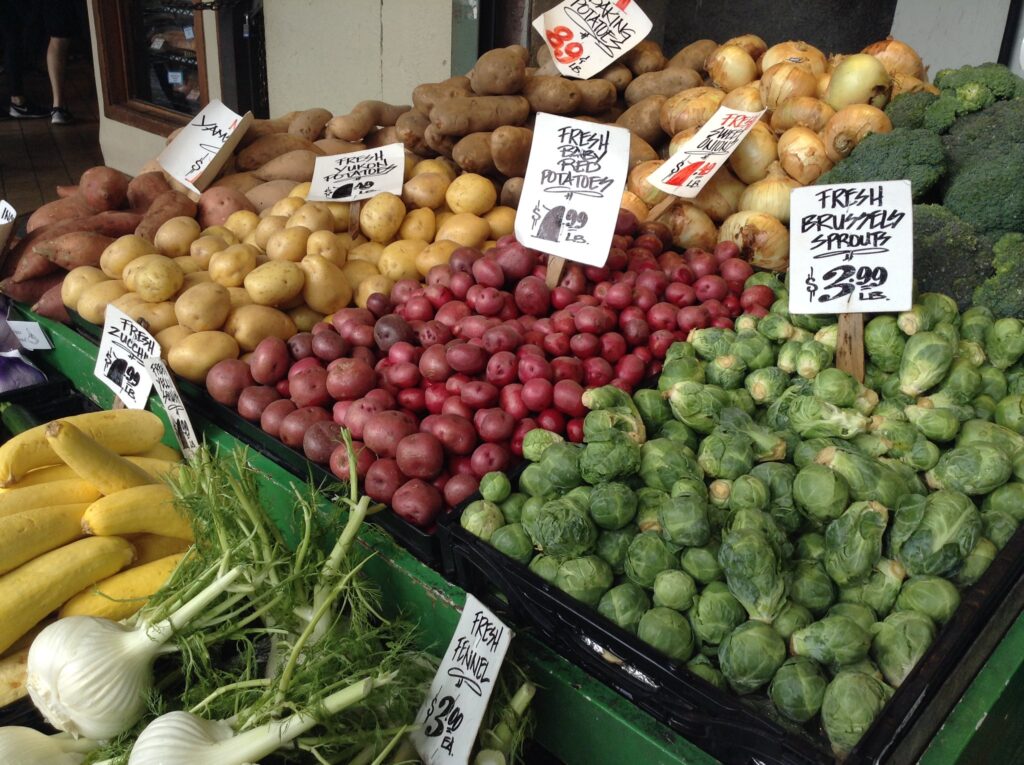
Photo by Deborah Smith on Flickr
National Nutrition Month is an annual campaign to help people make informed food choices and develop healthy habits. It was created 50 years ago by the Academy of Nutrition and Dietetics (AND), a trusted source of food and nutrition information. This year’s theme is “Beyond the Table,” which aims to promote healthy meals and snacks anywhere you are!
Many of us eat some meals, snacks and beverages outside the house or school, and these choices can contribute to great or poor health. Our choices can help us reach or maintain a healthy weight and lower cholesterol, blood sugar and blood pressure. Healthy eating on the go may seem hard at first. What lunch will you get near work/school? Which snacks are healthy at the corner store? Planning and bringing food with us is often the cheapest and healthiest path. To avoid making a rushed purchase, here are some great tips for healthy eating “Beyond the Table.”
Healthy Snacks Outside the Home
Whether running errands or going to appointments, feeding the kids after school, or snacking at your desk, here are some choices you can bring from home: yogurt, string cheese, a piece of whole or cut fruit, carrot sticks, nuts, dry cereal, granola bar. When you are in the store and need to grab a healthy choice, you can pick up yogurt, a piece of fruit, a packet of nuts, granola bar, a carton of flavored milk, seltzer water.
Lunch or Dinner at Work/School
Meals to bring from home like dinner leftovers of protein, grain, and non-starchy vegetable, a sandwich on whole grain bread, homemade soup/stew/chili/grain salad like Quinoa and Black Bean Salad, salad with chicken/tuna/eggs/beans for protein are filling and quick choices that will also save you money!
When you do go out to eat at a restaurant, or pick something up from the deli, wise choices include soup, salads with protein, a sandwich on whole grain bread or wrap, a meal with vegetables and baked/broiled/grilled/steamed meat or fish.
Ways to Save Money on Food:
- Like salads or cooked leafy greens? Buy a head of lettuce, cabbage, and bunches of spinach and kale rather than buying leafy greens in bags or plastic containers. Wash and tear the pieces and store them in a bag or Tupperware for later.
- Some fruits and vegetables will be cheaper at different times of the year. For example, buying apples and pears in fall, oranges in the winter months and saving the purchase of strawberries for summer.
- When possible, buy store brands rather than brand names. The flavor is often as good or even better!
- Don’t forget to look for sales using a store circular before shopping.
- Watch the WASTE! Use even the smallest leftovers for a meal the next day, adding a salad or vegetables on the side to make the meal more filling. Use leftovers in egg dishes, pasta, soup, stews, casseroles, etc.
For help reaching your health goals, talk to your health care provider about seeing a registered dietitian or health educator. We are happy to share more tips on how to eat healthy at home, and beyond!
Mary Lou Pompeii RDN CDCES CDN is an associate wellness dietitian in the Human Resources, Total Rewards Division of Montefiore Health System.




